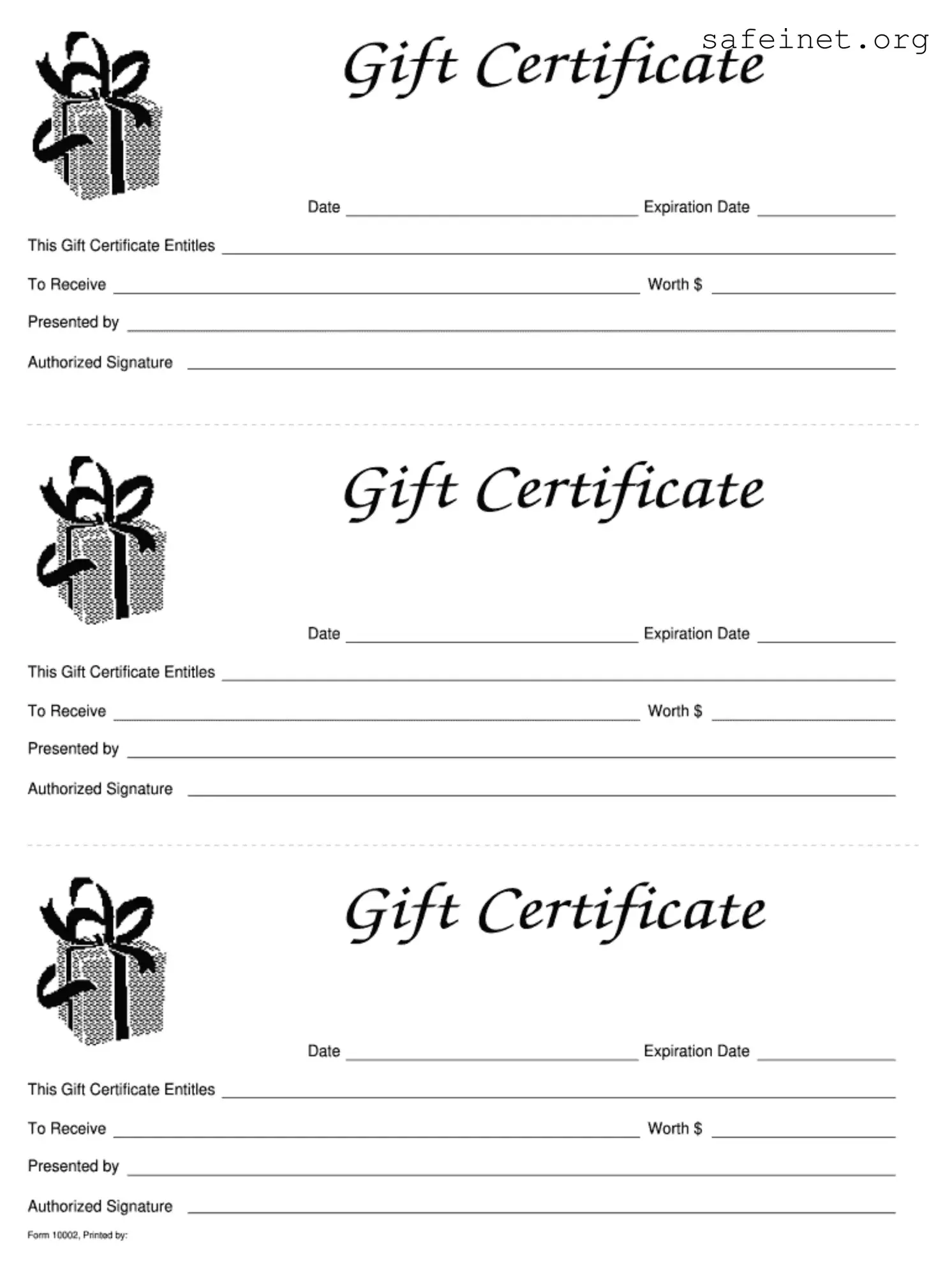What is a Gift Certificate form?
A Gift Certificate form is a document used to grant an individual a specific amount of value to be used toward services or products. It can be given as a present or reward, allowing the recipient the flexibility to choose what they want to purchase.
How do I fill out the Gift Certificate form?
To complete the form, enter the recipient's name, the amount of the certificate, and your name as the giver. Additional details such as a message or expiration date may also be requested, depending on the specific form.
Are there any restrictions on using the Gift Certificate?
Yes, many gift certificates may have restrictions. These can include expiration dates, specific items or services that can be purchased, or limitations on combining with other offers. It's important to check the terms listed on the certificate.
Can I use the Gift Certificate more than once?
Whether you can use the gift certificate multiple times depends on its value and the store or service provider's policies. Some certificates may be reusable until the total value is exhausted, while others may be valid for a single use only.
What should I do if my Gift Certificate is lost or stolen?
If a gift certificate is lost or stolen, immediately contact the issuing company. Some companies may offer a replacement if you can provide proof of purchase or the certificate number. However, policies differ, so response times and resolutions may vary.
Is there an expiration date on Gift Certificates?
Many gift certificates do come with an expiration date. This is usually specified on the certificate itself. It is essential to be aware of this date to ensure that the certificate is used before it becomes invalid.
Where can I use my Gift Certificate?
The location where you can use a gift certificate typically depends on the issuing business. Some may only be valid at a specific location, while others might be accepted at multiple locations or even online. Always check with the business for details.
Can I purchase a Gift Certificate online?
Many businesses offer the option to buy gift certificates online. This process usually allows for selecting the amount, personalizing a message, and receiving the certificate via email or mail, depending on the business's offerings.
Will I receive a physical certificate after purchasing?
Whether you receive a physical certificate depends on how it was purchased. Some businesses provide a physical certificate for in-store purchases, while online transactions might offer a digital version sent through email.
Can I customize the amount on a Gift Certificate?
Most companies allow you to choose the amount of a gift certificate. Common options include fixed values like $25, $50, or $100, but you may also be able to enter a custom amount, subject to the business's policies.

